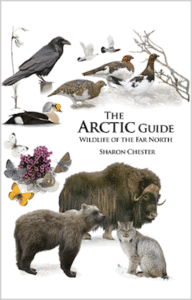 Despite how it is often depicted, the arctic is a place of considerable, as well as resilient, tenacious, and most certainly fascinating life. From the widely known Polar Bear and Beluga Whale to the not so widely known Arctic Bumblebee which despite not being warm-blooded (or truly “blooded” at all, for that matter) can raise its own body temperature to near that of a human, the planet’s northern-most latitudes are home to a wide range of plant and animal species.
Despite how it is often depicted, the arctic is a place of considerable, as well as resilient, tenacious, and most certainly fascinating life. From the widely known Polar Bear and Beluga Whale to the not so widely known Arctic Bumblebee which despite not being warm-blooded (or truly “blooded” at all, for that matter) can raise its own body temperature to near that of a human, the planet’s northern-most latitudes are home to a wide range of plant and animal species.
This December, a new field guide to over eight hundred of these plants, birds, butterflies, fish, and mammals which inhabit the arctic regions around the globe will be published by Princeton University Press: Sharon Chester’s The Arctic Guide; Wildlife of the Far North.
Given the high level of quality to be found in Chester’s previously published A Wildlife Guide to Chile; Continental Chile, Chilean Antarctica, Easter Island, Juan Fernández Archipelago, my expectations for this new guide are elevated indeed and I’m very eager to discover if they will be met (although given the rigorous editorial standards I’ve come to know from Princeton University Press over the years, I have every reason to believe that they will be).
If you enjoyed reading this, please consider signing up for The Well-read Naturalist's newsletter. You'll receive a helpful list of recently published reviews, short essays, and notes about books in your e-mail inbox once each fortnight.
